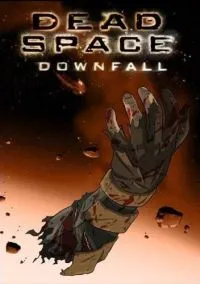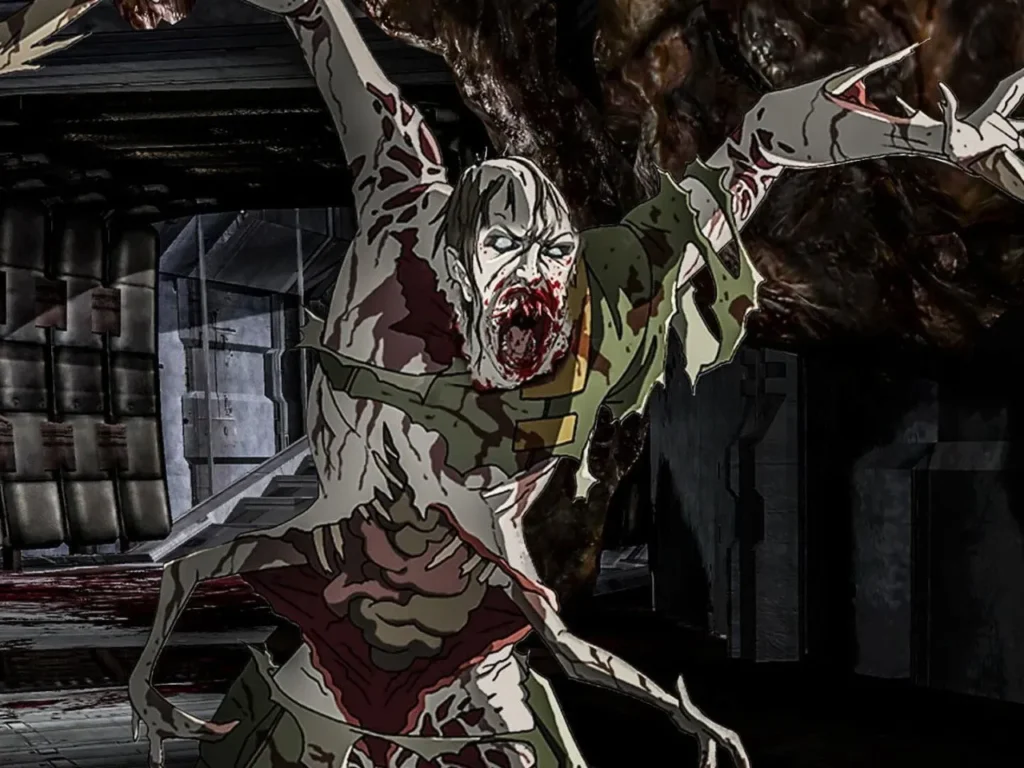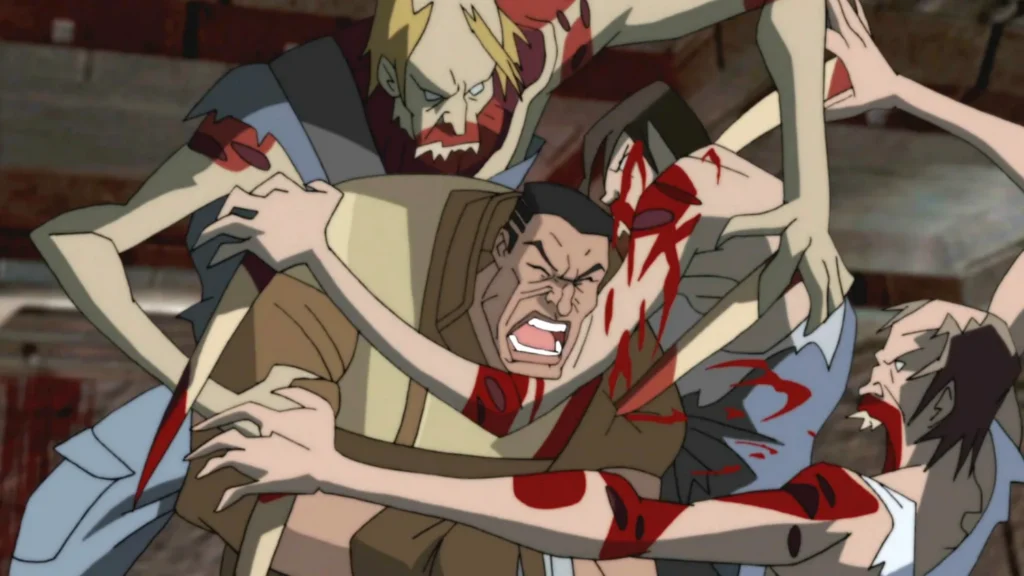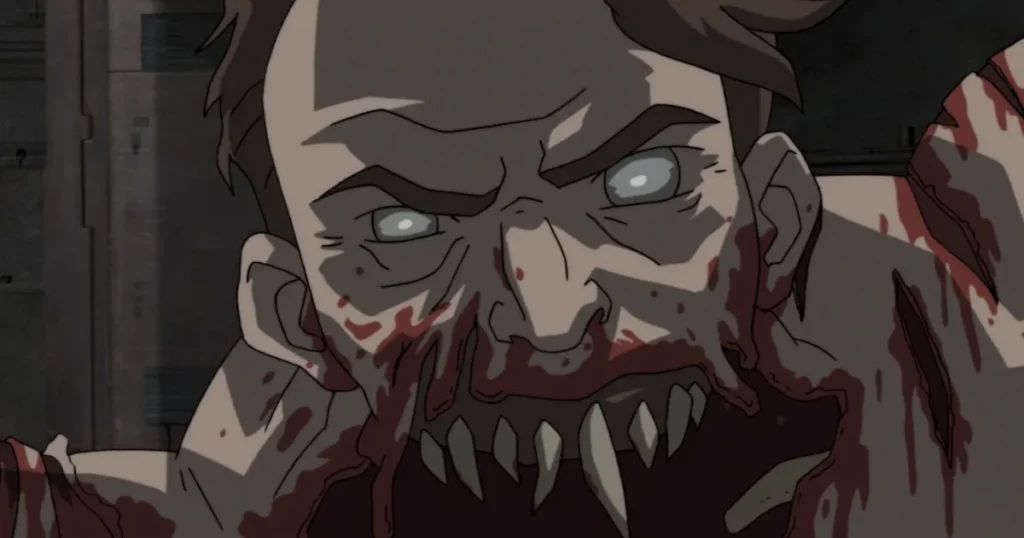In the end, “Dead Space: Downfall” serves not only as a vehicle for exploring the horror elements of the “Dead Space” universe but also as a cautionary tale about the dangers of unchecked ambition and the hubris of mankind. The consequences of their actions unravel in harrowing ways, bringing forth a somber reflection on the ethics of scientific exploration and the perils of encountering the unknown. The ending of the film, which ties directly into the storyline of the video game, leaves viewers with a lingering sense of dread, mirroring the psychological and physical terror that players face in “Dead Space.”
Dead Space: Downfall: An Examination of the Animated Prequel
The world of video games has given rise to a plethora of franchises, each with its own unique mythology and fans. Among these, the “Dead Space” series stands as a hallmark of survival horror, known for its harrowing atmosphere, intricate storytelling, and deeply immersive gameplay. While many fans have had hours upon hours of gaming experience battling necromorphs and traversing derelict space stations, few are aware of the animated film “Dead Space: Downfall,” which serves as both a prequel and a complement to the original game. Released in 2008, this animated feature by Electronic Arts and directed by Chuck Patton adds depth to the narrative universe of “Dead Space,” providing context, backstory, and character development that enriches the gaming experience.

The Foundation of Dead Space’s Narrative
To fully appreciate “Dead Space: Downfall,” it is crucial to understand the origins of the Dead Space franchise. The first installment of the series was launched in 2008 and quickly garnered both critical and commercial success. Set in a distant future where humanity is reaching the stars, the game introduces players to Isaac Clarke, an engineer who boards the USG Ishimura, a mining spaceship that has gone dark. Upon boarding, he discovers that the crew has been transformed into horrific creatures known as necromorphs, created from reanimated corpses by an alien artifact called the Marker.
“Dead Space: Downfall” acts as a narrative bridge that fills in the gaps leading to the events of the first game. The film delves into the backstory of the Marker, detailing how it was discovered on the planet Aegis VII and the subsequent descent of the USG Ishimura into chaos. It explores the political and corporate machinations that surround the mining operations and how the quest for profit can lead to dire consequences. This animated feature ultimately serves to elevate the overarching themes of isolation, horror, and the hubris of mankind.
Plot Synopsis and Characters
“Dead Space: Downfall” is set against a backdrop of dread and paranoia, mirroring the aesthetic of the Dead Space universe. The animated film follows the journey of a crew aboard the USG Ishimura as they are drawn to an enigmatic artifact. Initially, the Marker is believed to be a source of untold wealth and technological advancement, drawing the attention of the government and the mining corporation, CEC (Colonial—Engineering Consortium). However, as the crew interacts with this ancient relic, they unwittingly awaken its malevolent powers.
Key characters in the film include Captain Mathius, a strong but flawed leader; Nicole Brennan, a medical officer and love interest of Isaac Clarke; and a host of other crew members who each contribute to the narrative in their own way. As they begin to experience the unsettling effects of the Marker, paranoia arises and the crew’s unity is shattered. The film takes viewers through a harrowing journey of betrayal, fear, and survival as the characters grapple with the horrors unleashed by the Marker, drawing upon each individual’s psychological and physical strengths.

Artistic and Cinematic Elements
“Dead Space: Downfall” is notable for its artistic style and overall cinematic execution. The animation combines 3D elements with a distinctive design reminiscent of graphic novels, effectively conveying the film’s dark atmosphere. The character designs, the eerie settings of the Ishimura, and the grotesque appearance of the necromorphs all contribute to the haunting aesthetic that has become a hallmark of the Dead Space series.
The sound design and score also play pivotal roles in enhancing the experience. With eerie sound effects and a chilling score, the film builds tension and evokes a sense of dread that does justice to the psychological horror that the Dead Space franchise is known for. As viewers witness the unfolding chaos aboard the Ishimura, they are enveloped in a soundscape that amplifies feelings of isolation and despair.
Themes and Contributions to the Dead Space Universe
At its core, “Dead Space: Downfall” explores several themes that resonate with the human experience, especially when placed in extraordinary circumstances. The thin line between ambition and greed is prevalent throughout the storyline, as the crew’s desire for advancement leads them to take reckless risks. This theme is underscored by the corporate culture depicted in the film, where profit is often prioritized over ethical considerations. Viewed through this lens, “Downfall” serves as a cautionary tale about the consequences of unbridled ambition.
Another theme present in the film is the breakdown of human relationships in the face of adversity. As the crew members succumb to paranoia and suspicion, the bonds that once held them together disintegrate, serving as a poignant reminder of how fear can twist rationality and cloud judgement. The isolation experienced by the characters foreshadows the sense of loneliness and dread that Isaac Clarke would later face in the video game.

The Connection to The Gaming Experience
While “Dead Space: Downfall” stands alone as an engaging narrative, its connection to the gaming experience is undeniable. The animated film provides players with additional insights into the events that transpired prior to the game, enhancing their understanding of the motivations behind certain characters and the ramifications of their actions. This connection adds layers to the gameplay, allowing players to engage with the story on a more profound level.
Moreover, with its emphasis on horror and the psychological implications of interacting with the Marker, “Dead Space: Downfall” enriches the lore of the Dead Space universe. It creates a more comprehensive background that fleshes out the experiences of Isaac Clarke, making his journey have even greater emotional weight. Fans of the game are treated to the opportunity to delve deeper into the fears and challenges faced by the characters who precede him, creating a sense of continuity within the franchise.

Plot of Dead Space: Downfall
“Dead Space: Downfall,” an animated horror film released in 2008, serves as a prequel to the acclaimed survival horror video game “Dead Space.” Directed by Chuck Patton and produced by Film Roman, the movie delves into the backstory of the events that lead to the catastrophic incident aboard the USG Ishimura, a mining ship in deep space that becomes infested with a malevolent alien force known as the Necromorphs. The film combines elements of horror, science fiction, and psychological thriller to create a gripping narrative that explores themes of isolation, fear, and the unknown.
The story unfolds in the distant future where humanity has developed advanced technologies for space exploration and mining. The USG Ishimura, a colossal planet-cracking ship, is tasked with harvesting resources from various celestial bodies. Aboard the ship is a diverse crew of individuals, including miners, engineers, and security personnel, all primarily concerned with their mission and the potential profits it can offer. Among them is an important character, Captain Zachary Norton, who embodies the ship’s leadership and determination, as well as a cast of crewmembers whose fates will gradually become intertwined in a horrifying fate.


The narrative begins with the discovery of an alien artifact—a mysterious and ancient Marker—on the planet Aegis VII during a mining expedition. This artifact, a monolith-like structure, emanates a powerful signal that affects those who come into contact with it. It serves as a catalyst, awakening the dormant Necromorphs: grotesque, reanimated corpses driven by a malevolent force. The film showcases how human ambition and curiosity can lead to disaster when they intersect with the unknown, setting the stage for the impending horror.
As the story progresses, the crew becomes increasingly disturbed as they experience hallucinations, paranoia, and brutality among their ranks, all driven by the sinister influence of the Marker. Dr. Maria Alpres, an important character in the film, is one of the first to study the Marker and begins to notice its disturbing effects on her fellow crewmembers. The gradual psychological deterioration of the crew features prominently in the film, showcasing how the tethering of human beings to the unknown, and their inability to comprehend it, creates a fertile ground for chaos. The necromorph infestation escalates, causing horrific deaths and transformations that take place around the ship, turning the crew’s once-familiar environment into a nightmarish hellscape.


As the narrative unfolds, viewers can observe the shifting power dynamics and relationships among the crew members. Personal motives begin to clash with duty, and survival takes precedence over camaraderie. The tension escalates as characters grapple with their sanity, and alliances shift amidst the ensuing chaos and carnage. Norton’s role as captain is put to the test as he attempts to maintain order and safety, struggling against an ever-growing tide of madness and violence that threatens to consume not only the crew but the very essence of humanity itself.
The film’s visual aesthetic contributes significantly to its horror atmosphere, with disturbing imagery of necromorphs and haunting settings that evoke a sense of dread and suspense. The animation style, while reminiscent of traditional anime, effectively captures both the grotesqueness of the necromorphs and the chilling isolation of deep space. The film culminates in an explosive climax, as those remaining grapple with the fallout of their encounters with the Marker and the necromorphs, leading to a desperate bid for survival that is filled with breathtaking tension.

Conclusion
“Dead Space: Downfall” is more than just an animated film; it is an essential piece of the larger Dead Space narrative puzzle that deepens the lore and enhances the viewing and gaming experience. Through its exploration of complex themes, engaging characters, and an immersive atmosphere, the film successfully captures the essence of what has made the Dead Space series a revered cornerstone in the realm of survival horror. As fans continue to celebrate the legacy of the series, “Downfall” serves as a haunting reminder of the fragility of humanity when confronted with the unknown, leaving viewers pondering the ultimate cost of ambition and curiosity in the vast and unforgiving expanse of space.
